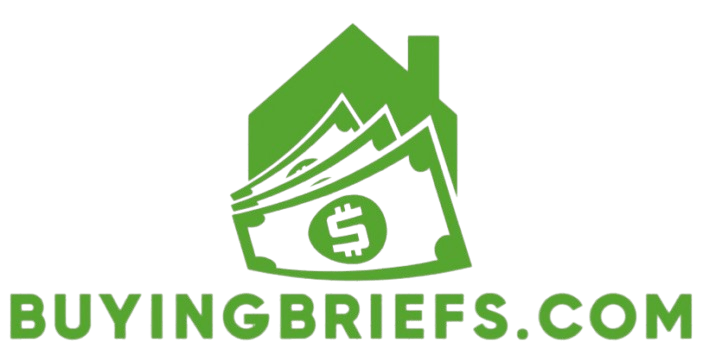5 Local Market Factors to Consider
Understanding the local market is crucial for any business aspiring to thrive and expand. This article delves into five key factors that can greatly influence your success: demographics, economic conditions, competitors, consumer behavior, and regulations.
Each section provides guidance on how to analyze these elements. You’ll gain insights needed to make informed decisions and adapt to changes.
Explore how understanding these local market factors can elevate your business strategy!
Contents
- Key Takeaways:
- 1. Demographics and Population
- 2. Economic Conditions
- 3. Competitors and Market Share
- 4. Consumer Behavior and Trends
- 5. Regulatory Environment
- How Can a Business Analyze the Local Market?
- How Can a Business Use Market Analysis to Make Informed Decisions?
- What Are the Potential Risks of Not Considering Local Market Factors?
- How Can a Business Adapt to Changing Local Market Conditions?
- What Are the Benefits of Understanding the Local Market?
- Frequently Asked Questions
- What are the 5 local market factors to consider?
- How does competition affect the local market?
- What role do demographics play in the local market?
- Why consider economic conditions in the local market?
- How do cultural influences affect the local market?
- What role do government regulations play in the local market?
Key Takeaways:

Understanding the demographics of a local market is essential. It helps businesses tailor their products and services to the needs of their target audience.
Economic conditions impact consumer spending and overall demand. Analyzing competitors helps identify your market position and growth opportunities.
1. Demographics and Population
Understanding the demographics of a new area is vital for your expansion strategy. It provides insights into customer segments and local talent availability.
This knowledge can shape your sales strategies and help you identify promising markets.
For example, looking at age distribution helps tailor your offerings to different age groups. This ensures that younger consumers who crave innovation are reached, along with older demographics who appreciate tradition.
Income levels are also critical. They guide your pricing strategies and marketing efforts.
Recognizing cultural diversity allows you to customize branding and messaging. This fosters stronger connections with local communities.
2. Economic Conditions
Looking at the economic conditions of a new area is crucial for your business expansion. It reveals insights into market size, growth potential, and economic stability factors that can significantly influence your investment decisions and overall strategy.
By evaluating key indicators like GDP growth, unemployment rates, and consumer spending patterns, you can assess the health of the economy and measure consumer confidence. A robust GDP typically indicates a thriving market, while rising unemployment might flag economic distress and cautious spending behaviors.
Understanding local entrepreneurial activity is essential. It showcases the economy’s vitality and hints at the potential for innovation and competition. Together, these elements create a comprehensive view of the landscape, enabling you to craft your entry strategies with precision.
Identifying your competitors and grasping market share are crucial steps when expanding into a new geography. These insights into the competitive landscape will allow you to craft a robust pricing strategy and gain a significant edge.
By using various methods to analyze competitors, such as SWOT analysis strengths, weaknesses, opportunities, and threats you can uncover the dynamics within your industry. This strategic approach not only highlights areas where you can excel but also points out potential avenues for investment and growth.
Regularly assessing market trends equips you with the intelligence needed to adapt your strategies effectively. This understanding enables you to make informed decisions that enhance your market share while keeping you one step ahead in an ever-evolving marketplace.
4. Consumer Behavior and Trends

Understanding consumer behavior and market trends is essential for adapting your products and marketing strategies to local preferences. This approach boosts brand recognition and drives sales.
Methods like surveys and customer feedback uncover invaluable insights into what motivates your audience. This information identifies trends and reveals the unique needs of different demographics.
By paying attention to these factors, you make informed decisions about product development. This ensures your offerings excite current demands and anticipate future shifts.
5. Regulatory Environment
Navigating the regulatory landscape is crucial for expanding into a new geography. You need to understand local regulations, product standards, and legal considerations to ensure compliance and minimize risks.
This complexity extends to import and export regulations, which differ widely by region. A thorough review is essential to avoid costly penalties or shipment delays.
The nuances of zoning laws, which dictate how land can be used, significantly influence your operational capabilities. It’s also important to consider industry-specific requirements for safety, environmental impact, or labor practices.
A comprehensive understanding of these regulations is vital for success in a new market. It protects you from legal challenges and encourages wise decision-making.
How Can a Business Analyze the Local Market?
To analyze the local market effectively, consider market demand, economic conditions, and cultural compatibility. Exploring 5 ways to research your local market can illuminate both opportunities and challenges in your new landscape.
Start by gathering data on local demand to pinpoint your target demographics. Pay attention to economic indicators like employment rates and growth statistics for valuable insights.
Once you’ve collected this data, using SWOT analysis and cost-benefit evaluations helps you interpret it and make strategic choices. A thorough market analysis enhances your understanding and positions you to seize opportunities.
What Are the Key Data Points to Consider?
Key data points like market size, growth potential, demographics, and the competitive landscape shape your business strategy. Gathering detailed demographic statistics helps tailor your offerings to the local population.
Conduct a thorough competitor analysis to spot market gaps and unique propositions for a competitive edge. Economic indicators also provide insights into market health and purchasing power.
These data points clarify the local market landscape and enable informed strategic planning to allocate resources effectively.
How Can a Business Use Market Analysis to Make Informed Decisions?

Utilizing market analysis, the process of studying customer needs and preferences, enables you to make informed decisions about product adaptations, pricing strategies, and marketing approaches while ensuring alignment with local regulations and customer preferences.
By examining key data trends and consumer behavior, you can uncover new opportunities for growth and eliminate less effective tactics.
Take Starbucks, for instance; they used market analysis to refine their mobile app features, enabling personalized promotions that resonate with local tastes.
By establishing clear objectives grounded in these insights and continuously monitoring your progress, you can pivot more adeptly in response to shifting market conditions.
This proactive approach enhances customer satisfaction and creates a habit of continuous improvement and innovation within your organization.
What Are the Potential Risks of Not Considering Local Market Factors?
Ignoring local market factors can expose you to substantial risks, including a loss of competitive advantage, decreased brand recognition, and misalignment with customer expectations, ultimately hindering your sales and revenue growth.
Consider a popular fast-food chain that expanded into a new region without understanding local dietary restrictions; the result was backlash and a significant drop in patronage.
When companies overlook local regulations, they often face fines, legal challenges, or even court-ordered shutdowns. A well-known tech firm learned this the hard way, facing significant penalties for not adhering to privacy laws in a foreign market, which severely tarnished its reputation.
Marketing campaigns that disregard cultural nuances can lead to ineffective messaging, alienating potential customers and wasting valuable resources.
To navigate these challenges effectively, it s crucial for you to invest time in thorough local market research.
How Can a Business Adapt to Changing Local Market Conditions?
Adapting to ever-evolving local market conditions is crucial for maintaining relevance and competitiveness. This means gathering customer feedback, monitoring trends, and adjusting your strategies accordingly.
By actively listening to your customers and analyzing their preferences, you can fine-tune your offerings to better serve the community’s needs. This continuous feedback loop helps you identify emerging opportunities and highlights weaknesses in your current strategies.
Keeping a close watch on local market dynamics and competitor actions allows you to stay ahead of the curve. By incorporating real-time data and insights into your decision-making processes, you can pivot quickly and effectively, ensuring you remain responsive to both challenges and opportunities as they arise.
What Are the Benefits of Understanding the Local Market?
Understanding the local market brings a treasure trove of benefits your business can’t afford to overlook. Think enhanced brand recognition, increased sales and revenue, and a sustainable competitive edge that secures your position in any new geography.
By tapping into local insights, you can foster stronger relationships with your customers, cultivating a sense of trust and community. For instance, a coffee shop that sources its beans from local farms supports the local economy and showcases a commitment to quality and sustainability attributes that resonate deeply with environmentally-conscious consumers.
This understanding enables you to craft tailored marketing strategies that directly speak to local values, needs, and preferences. As a result, businesses often enjoy higher customer loyalty and a surge in word-of-mouth referrals, paving the way for sustained growth and a stellar reputation within the community.
Frequently Asked Questions

What are the 5 local market factors to consider?
- Competition
- Demographics
- Economic conditions
- Cultural influences
- Government regulations
How does competition affect the local market?
Competition directly impacts the supply and demand for goods and services in the local market. It can also affect pricing, marketing strategies, and customer loyalty.
Act now to understand local dynamics and ensure the success of your business!
What role do demographics play in the local market?
Demographics, like age and income, influence consumer behavior. Understanding this helps businesses target their audience effectively.
Why consider economic conditions in the local market?
Economic factors, such as inflation and employment rates, greatly affect business success. Knowing these elements leads to better business decisions.
How do cultural influences affect the local market?
Cultural factors, including customs and values, shape consumer preferences. Businesses must consider these when creating marketing strategies.
What role do government regulations play in the local market?
Government rules, such as taxes and laws, significantly impact local businesses. Following these regulations is crucial to avoid legal troubles and ensure smooth operations.






